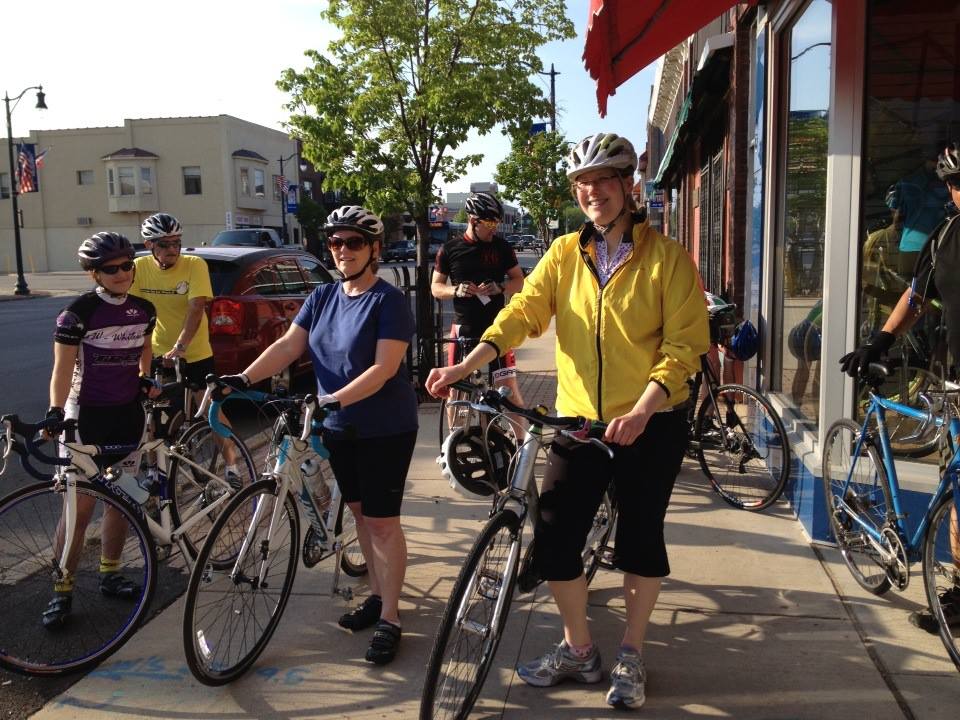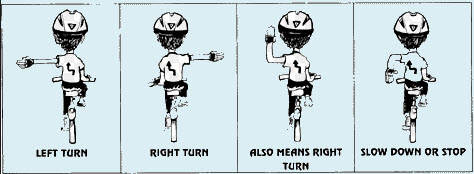Decide to Ride: A Guide to Group Rides
Knowledge is Riding Power

When it comes to going for that long bike ride, it's always more fun to do it with friends! A group bike ride is a great way to get together with those that have the same interest. You can meet new people, catch up with old friends, conquer any physical goals, release any stress that is acquired from your everyday life, and a time to talk and laugh. You don't need to be a competitive cyclist to enjoy the benefits of group riding.
We would like to share with you some basics & ettiquette when riding in a group.
3 Tips for Before the Ride
1. Be Supportive and Provide Camaraderie. Watch out for your fellow cyclist before, during, and after a ride. Introduce yourself, make newcomers feel welcomed. Be friendly by offering some information on the ride and route. Be a helping hand to someone who may have gear or equipment problems. If you are new to a group, be assertive and inquire about your new surroundings and potential cycling buddies.
2. Be Punctual. Make sure you are ready to start riding when the ride begins. Have your gear and equipment ready. If your ride leaves from the convenience of a bike shop, show up early! This gives you time to pump your tires, fill your water bottles, buy any spare inner tube you may need, a patchkit, or any electrolyte tablets. Preparation will create confidence.
3. Be Predictable. Cycling with others requires more attention than riding alone. Your fellow riders will expect you to ride straight, at a constant speed, unless you indicate differently.
Tips for During the Ride
*Changing Positions Correctly- Slower traffic often stays right, when riding ahead, pass others on their left. Verbalize this by saying, "on your left" this allows the cyclist to know your actions. DO NOT PASS ON THE RIGHT! There are cases, where a cyclist may not hear or be aware that you are approaching from behind. Unexpected noises can cause a cyclist to swerve towards you as you pass. If approaching a lone cyclist the offer of friendly greeting ("good morning" or "nice day for a bike ride") alerts the rider of your position and intention to pass.
*Watch Out at Intersections- When approaching intersections, signal your intention with hand signals. This alerts those behind you that you will be slowing down and/or stopping. You can call out or yell your intentions, however to those behind you it may sound like a blur. This may cause other cyclists to get confused at your direction. Be clear & conscious with your intention. You are responsible for verifying that there is no approaching traffic before entering.
Communicate with the Group. Use hand and verbal signals to communicate with members of the group and with other traffic.
* Hand Signals-

*Verbal Warnings- Verbal warnings allow cyclists behind you of your changes in direction or speed. Call out "left turn," "right turn," "slowing," "stopping," etc. Announce direction well in advance of the intersection, so members of the group have time to position themsleves properly.
*Indicate Hazards
 - Warn your fellow cyclists who may not have a good view of the road's surface ahead. It is important to announce holes, gravel, grates, brances, glass, and any other potential hazards. Do this by pointing down to the left or the right, or you may verbally announce the hazard. Everyone in a group should be made aware of these hazards, however not everyone needs to annuonce them.
- Warn your fellow cyclists who may not have a good view of the road's surface ahead. It is important to announce holes, gravel, grates, brances, glass, and any other potential hazards. Do this by pointing down to the left or the right, or you may verbally announce the hazard. Everyone in a group should be made aware of these hazards, however not everyone needs to annuonce them.*Watch For Traffic Coming From the Rear- Those in front cannot see traffic approaching from the rear, it is the responsiblity of other riders in back to inform the others by saying "car back." This warns leading riders to maintain psoition and the for the potential of a passing car. Use this warning at your discretion, busy roads with continous passing traffic the "car back" call will lose it's significance. Use the warning "car up" on narrow roads to warn following riders of approaching traffic.
*Leave a Gap for Cars- When riding up hills or on narrow roads where you are impeding faster traffic, leave a gap for cars between every three or four bicycles. This allows motorist to take advantage of shorter passing intervals and move gradually around the entire group
*Move Off the Road When You Stop- Whether you are stopping because of mechanical problems or to regroup with your companions, move well off the road so you don't interfer with incoming traffic.
*Riding Two Abreast- Ride single file or double file appropriate to the roadway, traffic volume, and whre allowed by law. Even where riding double is legal, set a good example and be an ambassador for cycling. Courtesy dictates that you single up when cars are trying to pass if the lane is wide enough for them to safely do so.
